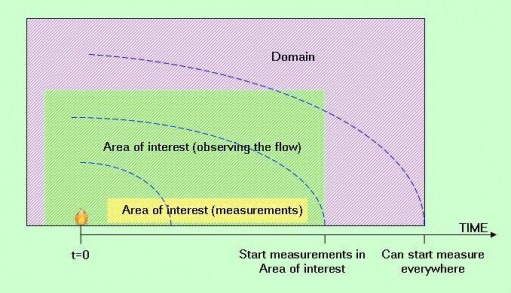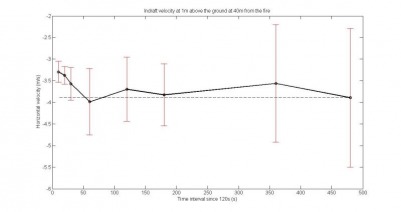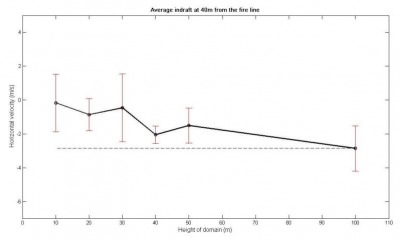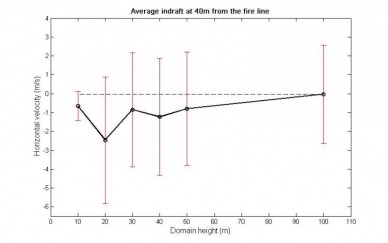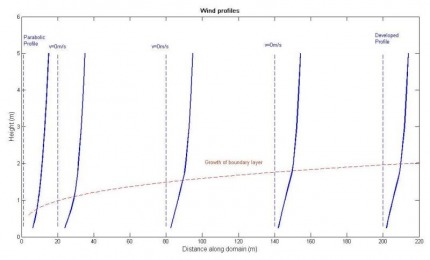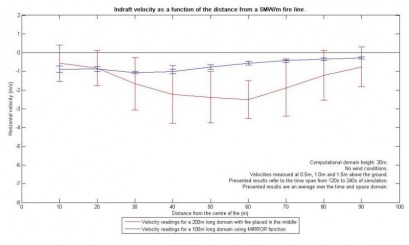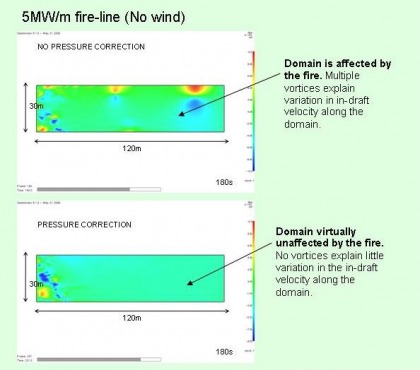Parametric Studies
For full details of the parametric study see the report in downloads.
Simulation time
Simulations presented below show that taking velocity readings over at least 120s time-window beginning at T1= 120s is a credible and optimal way of establishing the magnitude of in-draft.
Both the percentage error and CPU requirements are within the acceptable limits.
This conclusion is only applicable when measurements are taken in the area of interest stretching 80m, possibly up to 100m, form the fire. When measuring farther downwind the time window has to be modified accordingly.
Both the percentage error and CPU requirements are within the acceptable limits.
This conclusion is only applicable when measurements are taken in the area of interest stretching 80m, possibly up to 100m, form the fire. When measuring farther downwind the time window has to be modified accordingly.
Domain length
Length of the domain has a strong effect on the flow characteristics in the domain. If the domain is too small the boundary conditions affect the flow. Additionally, the behaviour of vortices and in-draft distribution shows high ununiformities which are not observed using larger domains. If domain is too long it requires a lot of processing time.
Domain height
Similar effects as for domain length are observed in domain height. Additionally, short domains do not allow for flow to develop in the whole of the domain.
On the other hand to tall domains become only partially affected by fires suggesting wasted processing time.
On the other hand to tall domains become only partially affected by fires suggesting wasted processing time.
Grid size
Flow is very grid sensitive. There is no convergence observed. Non-conforming with the rest behaviour of the coarsest, 0.40m grid, suggests that only smaller mesh sizes should be used.
Wind profile
It is found that the standard parabolic wind profile applied 20-40m from the fire is inadequate. Instead a wind development zone is suggested. It is important to ensure that flow in the domain is driven by a pressure gradient imposed between the upstream and downstream boundaries.
Mirroring of domain
Mirroring is a process by which a symmetric domain is cut into half and only that one half is simulated. The main reason for doing that is to reduce the processing time. This study has found that mirroring is not appropriate for modelling of wildfires. Different flow regimes are observed. It has also been found that flow development time has been greatly extended which is not offset by the reduction in size of the domain.
Pressure correction
Pressure correction is an optional command which can be applied in FDS5. It allows to ensure that flow using multiple meshes is adheres to the mass conservation equations. It has been observed that using it in windy conditions makes little difference to the flow behaviour. In windless conditions it significantly increases the time needed for flow to develop but the results obtained using it are thought to be realistic.
